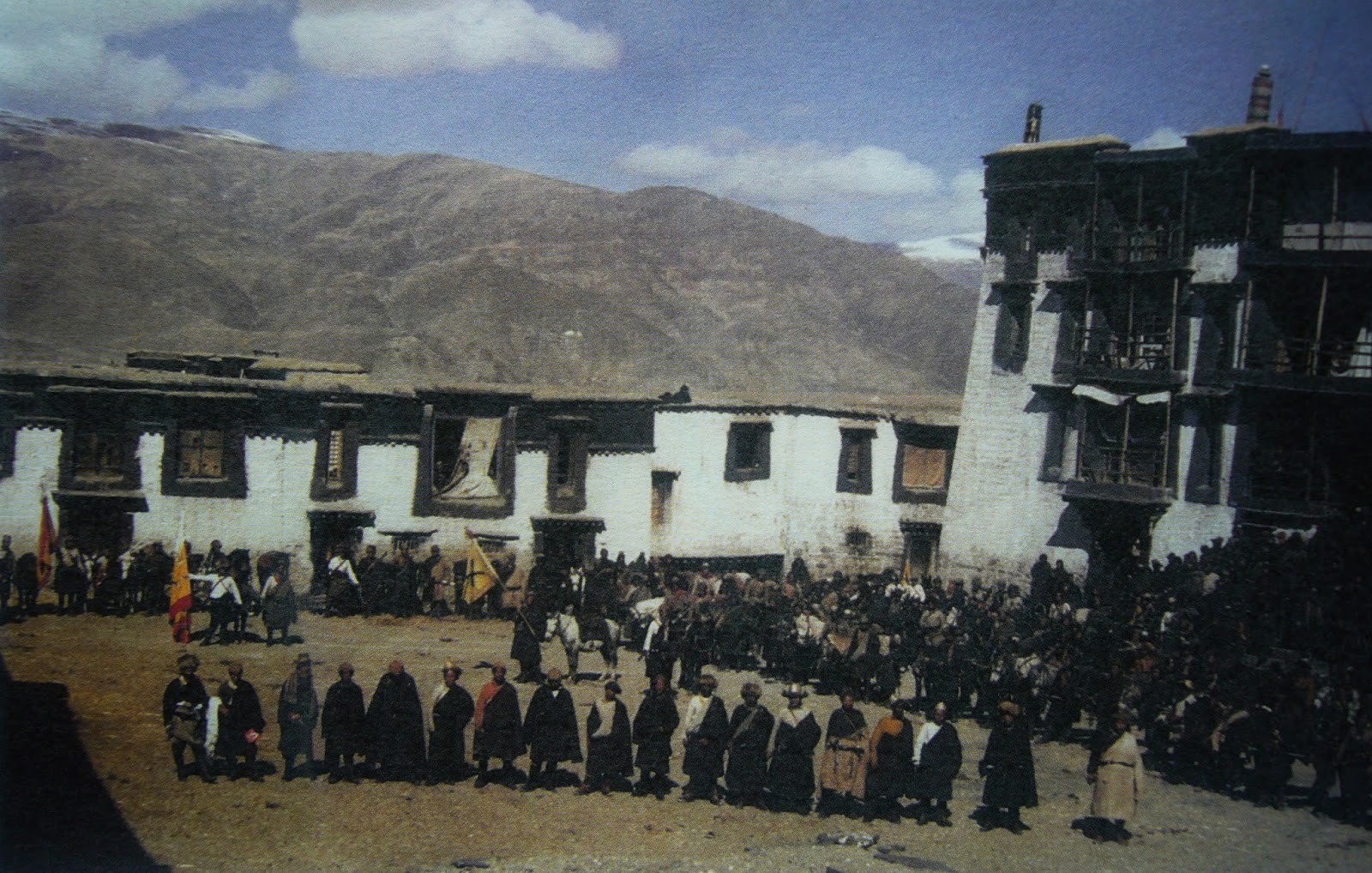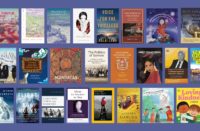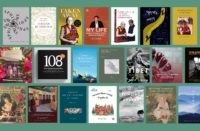
High Peaks Pure Earth has translated a blogpost by Woeser, originally written in two parts in August 2015 for the Mandarin service of Radio Free Asia and published on her blog on October 19, 2015.
Part One of the post is below and the second part will be posted separately. Woeser writes about her friend Tang Danhong‘s book project“Troubled Times: Voices of Tibetan Refugees” in which she and Tibetan researcher Sangjey Kep travelled to Tibetan settlements in India, interviewing Tibetans.
Four of the interviews carried out by Tang Danhong and Sangjey Kep for “Troubled Times: Voices of Tibetan Refugees” were translated into English by China Digital Times in 2014.
“The Urgency and Importance of Eyewitness Testimonies”
By Woeser
Part One
In the summer of 2010, the Chinese author Tang Danhong, who currently lives in Israel, cooperated with the exile Tibetan writer Sangjey Kep and went to Dharamsala, Bir, Dalhousie, Mundgod and other Tibetan communities in India to interview over 10 elderly Tibetans who had gone into exile. The book, titled “Troubled Times: Voices of Tibetan Refugees”, was subsequently published by the Taiwanese Snowland Publishing House. I was contacted and asked to write a foreword, which I happily agreed to, also because I had been good friends with Tang Danhong for 20 years.
This is what I wrote:
This book includes 11 stories of Tibetan people; or rather, it includes 11 verbal testimonies of Tibetan people.
These accounts are – there is no doubt – testimonies…
Time-period: The records implicate two time-periods. The accounts were gathered in 2010, but the interviewees talk about the events happening in around 1950.
Place: The records implicate two places. The accounts were gathered in Tibetan exile communities in India, but the interviewees talk about many in places within Tibet, mainly Kham, Amdo, the Golog pasture and U-Tsang.
People: The interviews were conducted by the Chinese author Tang Danhong. The translation work was done by the exiled Tibetan Sangjey Kep. The interviewees were all exiled Tibetans from Kham, Amdo or U-Tsang; they were all aged and two of them have sadly passed away.
Incidents: Indeed, “incident” is the right term. And we are not talking about ordinary incidents. The accounts touch upon the occupation and defending of one’s homeland, upon the destruction and defending of one’s beliefs, upon resisting against the massacring of human life, upon the rewriting and correction of history, upon representations and testimonials of the truth and so on.
I was reminded of a newly published translation that I read recently: Claude Mouchard’s “When I Shout – Eyewitness Literature of the 20th Century”. It is about the people that lived through and survived human calamities and use their own experiences to write diaries, memoirs, reportage, autobiographical accounts or poems. “Troubled Times: Voices of Tibetan Refugees” can be seen as oral history and is just as important as other literary accounts of eyewitnesses. This is because this kind of oral history has no narrator, no author written into the story. From the very beginning to the very end, it is the voices of 11 Tibetans who have survived historical disasters. The interviewer and translator faithfully recorded and reconstructed these accounts, turning this oral history into a genuine eyewitness account.
Claude Mouchard writes: “The most bitter historical incidents in this world have all been related to state violence. Against this backdrop, to be a so-called ‘witness’ means to report on organised, large-scale political violence from the point of view of those who lived through it. On the most fundamental level, an ‘eyewitness’ is a ‘survivor’. Someone who was subject to such forms of violence was supposed to be swallowed up by it or at least be deprived of his ability to speak, making him silently perish. So the language of eyewitnesses is naturally a language of a new life that should have been wiped away but nevertheless still exists.”
The eyewitness testimonies uttered in Tibetan by the 11 interviewees were all translated into Chinese so as to resist against the amnesia that the dominant power has been forcing upon the people and to provide truthful and effective accounts of the “upheaval” that Tibet was put through during the past half a century.
About the book “Troubled Times: Voices of Tibetan Refugees”, Tang Danhong wrote in an e-mail to me:
“The reason why I decided to interview these exiled Tibetans is to overcome all those who speak on behalf of Tibetans, regardless of whether their representations are positive or fake, I want to listen to the personal accounts and experiences of Tibetans. I am really happy to do this and even more happy that I have Sangjey Kep as a partner. Our criteria for finding interviewees were very simple: we were looking for those who had lived through the upheavals of the last century. There were a few Tibetans living in Dharamsala who have frequently been interviewed by the media and whose stories are already widely-known; I want to avoid those, even though I know that those widely-known publications exist in different languages and we cannot say that any of the stories are actually widely-known among Chinese speaking audiences.
“The 11 interviewees lived scattered across different exiled communities in India. Most of them come from Kham, some are famous, others are not. Sangjey Kep spared no efforts to find the latter ones. They were not well-prepared; some were happy to talk, while others only opened up after Sangjey Kep begged them to. When I was organising the data, I noticed that apart from the questions that I had prepared in advance, Sangjey had added a few important questions that could only be asked by someone who was familiar with the specific events and that I had not been so aware of.
“In their narratives they spoke of ‘ancient times’, that Tibet has never been part of China; of a different ‘central government’, namely the Kashag (Cabinet); they all identified as Tibetans, not as Chinese, not one of them thought that they were an ethnic minority of China and this was not some kind of ideological statement, it was their innate feeling. They talked of a different Tibet, including clearly defined territories that according to my profane thinking were mirages of Chinese administrative subdivisions … before I met the interviewees, I had gone to many of these places: Lithang, Chatreng, Drango, Kardze, Derge Tashigang, Dengke, Jomdo, Yushu…; All my memories of the snowy peaks, the grasslands, the wildflower, the temples, the people … appeared in a completely different light, becoming entangled with bullets, artillery, the loss of human life, with destitution and homelessness, a deserted place, death in a far away land…”
In a different e-mail, Tang Danhong wrote: “Sangjey Kep and I both believe that some of the common practices in translating into Chinese were not only unable to exactly convey Tibetan meanings, they also often included some deliberate arrogance and hidden political motives. Since the stories we collected were all narrated in Tibetan, the translation should be as close to the original as possible and to refrain from once again returning to the condescending Chinese translations. So we referred to all Han Chinese people as Chinese and turned the word “tribe” into the Tibetan term “Shogpa”, the word “headman” into the Tibetan “Pon” and “tusi” into “Gyalpo”. We also provided corresponding annotations.
I replied to Danhong: “Your words really touched me. You are very right. I am so fed up with those who claim to represent us but are pursuing their hidden agendas!”
Let’s take a look at the more than 20 questions that Danhong and Sangjey asked the interviewees. For instance, could you tell us some of your impressions of your hometown? Did you know your local headman? At the time, did you know about Chinese people and Chinese areas? Did you know that Tibet and China belonged to one and the same country? What were your impressions of the Chinese soldiers and cadres that came to your hometown? How did your relatives and fellow villagers discuss the arrival of the Chinese? Did you communicate with the Chinese? Did you have Chinese friends? Why did you decide to flee (or participate in resistance)? After deciding to follow resistance movements, did you feel that there was any hope to win? What incident left the deepest impression on you during your escape (or resistance)? What was the most painful experience in your life? The Chinese government labels you “rebel bandits”, do you feel that you were “rebel bandits”? And many more.
Danhong and Sangjey Kep did something that had been crying to be done. And it should also be done by the descendents of those who lived through these times of upheaval; it should also be done in every village, every tribe, every county, every district and every monastery. We must interview, record, photograph and tape everything; we must collectively remember and return an already lost Tibet, we must collectively reflect on how we ended up where we are today and think of the road that is ahead of us. In this way, eyewitness testimonies are not just a matter of 11 people, but of all six million Tibetans (what we like to call “Saya Druk”), including many compatriots who lost their lives and those who survived and those who were reborn and returned. This is exactly why eyewitness testimonials are so important and so urgent.
Out of the 11 interviewees, seven were from Kham, three from Amdo, one from U-Tsang, namely from the traditional three Provinces (Cholka Sum). Out of the interviewees from Kham, three were from Derge, which happens to be my father’s hometown. So when I was reading the book, I was overcome by complex feelings, as a descendant of Derge, I felt that a blank space was filled in. I also remembered another piece of eyewitness literature – “Blood Sacrifice” by the Tibetan scholar Bari Dawa Tsering. It was republished in 2012 and I wrote a review in the already closed down Hong Kong magazine “iSun Affairs”:
“‘Blood Sacrifice’ is a book that tells the story of Tibet losing the war. Through the accounts of around 100 Tibetans who were driven into exile, the book reveals the massacre that swept across the entire Tibetan region in the 1950s as well as the resistance against it; it is a cruel and sad truth, but it confirms a famous sentence by George Orwell, namely that all history was a palimpsest, scraped clean and re-inscribed exactly as often as was necessary. Today’s Tibet that was transformed from the Buddhist Snowland into Animal Farm has already been labelled as “liberated” and “new” by the victors. Bari Dawa Tsering, who grew up under the Chinese flag, crossed the snow mountains and became a new refugee. This book is an account of his experience when he penetrated and became familiar with various Tibetan exile communities in the 1990s. Many of the interviewees have already passed away, but left behind a precious eyewitness testimony of Tibet’s recent history.”
“Troubled Times: Voices of Tibetan Refugees” is a book that lets individuals little by little reveal the sad and tragic story of Tibet losing the war.
Beijing, August 2015





I didn’t know such things before, never less worth to read.